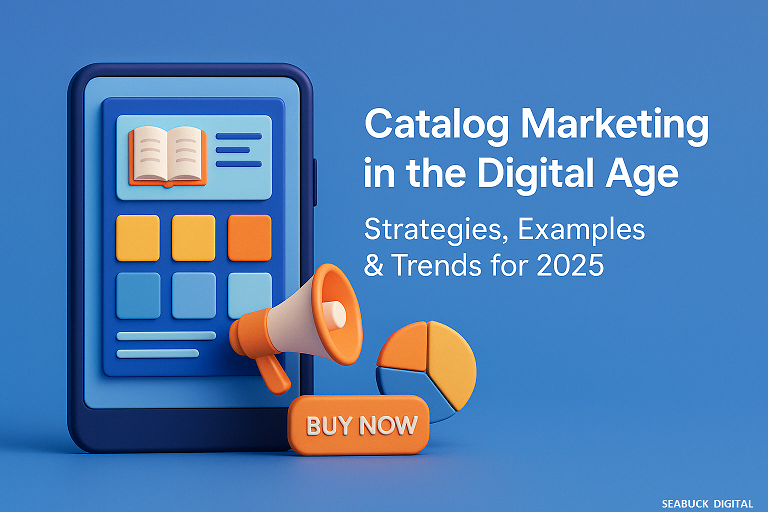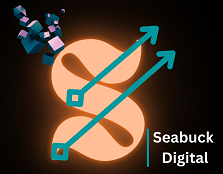
What is Catalog Marketing?
Catalog marketing may sound like a relic of the past, but guess what? It’s still alive and thriving in 2025 — just in a smarter, more connected way. With a blend of physical charm and digital precision, catalog marketing continues to be a powerful tool in the modern marketer’s toolkit.
Let’s break it all down — what catalog marketing is, why it still works, how to use it like a pro, and what’s coming next.
Definition & Meaning
What is catalog marketing? In simple terms, catalog marketing is a type of direct marketing where businesses showcase their products or services in a printed or digital catalog and distribute it to potential customers.
It’s not just a pretty booklet anymore. These catalogs are now data-driven, interactive, and hyper-personalized. Whether in a mailbox or inbox, they aim to get one thing: conversions.
Why is Catalog Marketing Still Relevant?
In the age of TikToks and tweets, it’s easy to assume catalogs are done for. But here’s the twist — they’re not. They’ve evolved. They now merge emotional storytelling with sharp digital tools.
Role in IMC Strategy
Catalogs play a key role in Integrated Marketing Communication (IMC). They bridge the gap between traditional and digital media, creating seamless brand experiences across channels. For example, a mailed catalog might inspire a purchase through a QR code that leads straight to the website.
Historical Context: Database Marketing in the 1800s
Catalog marketing is one of the earliest forms of database marketing — going all the way back to the late 1800s. Sears revolutionized commerce with their mailed catalogs, planting the seeds for the data-powered marketing we use today.
Key Strategies for Effective Catalog Marketing
Getting catalog marketing right in 2025 means combining creativity, personalization, and tech.
Print vs Digital Catalogs
Both print and digital catalogs have their perks. Print feels premium, tangible, and nostalgic. Digital, on the other hand, is trackable, eco-friendly, and interactive.
Integrated Campaign Examples
The most successful brands blend both worlds. Think: a printed catalog with a QR code linking to a 360° product view or an AR try-on. The key is synergy.
Using Interactive PDFs and Flipbooks
Digital catalogs aren’t boring PDFs anymore. Brands now use interactive flipbooks with embedded videos, clickable CTAs, and dynamic pricing updates.
Embedding CTAs for Direct Purchases
In digital catalogs, CTAs like “Shop Now” or “Add to Cart” are essential. Every click should move a user closer to the checkout.
Real-Life Examples
IKEA’s Print and Digital Hybrid Approach
IKEA nails catalog marketing by blending beautiful photography, real-life use cases, and AR tech for room previews. Their catalogs even tell stories about how people live.
Patagonia’s Storytelling Through Catalogs
Patagonia uses its catalogs not just to sell — but to advocate. Environmental stories, behind-the-scenes product tales, and activist messaging turn their catalogs into experiences.
B2B Product Catalog Success Stories
B2B players like Grainger and Fastenal use catalogs to provide quick reference for bulk buyers. Think: product specs, use cases, and pricing — all in one organized, scannable format.
Benefits & Advantages
Tangibility and Trust
Physical catalogs evoke trust and feel more “real” than digital ads. Studies show people spend more time flipping through print catalogs compared to web pages.
Product Catalogs for High-Intent Shoppers
Catalogs attract ready-to-buy customers. If someone’s reading your catalog, they’re already showing interest.
Driving Brand Recall and Loyalty
Unlike fleeting ads, catalogs stick around. They’re coffee-table material, and that means repeat impressions — and more chances to convert.
Trends to Watch in 2025
Rise of AI-Personalized Digital Catalogs
Brands now use AI to create unique catalogs for each customer — tailored to their preferences, purchase history, and browsing behavior.
AR/VR Enhanced Product Catalog Experiences
Augmented reality lets users “place” furniture in their room or try on shoes — all from the catalog. Welcome to shopping 3.0.
Sustainable and Eco-Friendly Print Options
As eco-awareness grows, brands are moving toward recyclable paper, soy-based ink, and carbon-neutral printing.
Which of the Following is Not a Trend?
Outdated catalog practices like static layouts, generic messaging, and bulk-mailing without segmentation. If your catalog isn’t smart, it’s invisible.
Must-Know Statistics About Catalog Marketing
- 78% of consumers said they looked at a catalog before visiting a website to purchase (Source: USPS).
- Catalogs boost online sales by 15% to 20% when integrated into campaigns (Source: ENRU).
- Print catalogs have a response rate of 4.4%, compared to 0.12% for email (Source: MOSAIC).
- In B2B, product catalogs are cited as the #1 tool for procurement decision-making (Source: BLUELINKERP).
- 87% of shoppers start their product search online. (Source: PUBLITAS)
(Source: USPS, DMA, Statista)
Catalog Marketing Agencies Worth Exploring
What Makes a Good Catalog Marketing Agency?
You want strategy, design, print, distribution — and analytics — all under one roof. The best agencies also offer personalization and digital integration.
Top Agencies Offering End-to-End Catalog Campaigns
- RR Donnelley – Known for mass-scale catalog production and distribution.
- Quad – Offers digital catalog solutions and omnichannel strategies.
- Modern Postcard – Ideal for small-to-mid businesses looking for print + tracking.
Challenges & Limitations of Catalog Marketing
Rising Print and Distribution Costs
Let’s face it — paper, ink, and postage aren’t cheap. But strategic segmentation can cut waste and boost ROI.
Environmental Concerns
While catalogs are getting greener, some consumers still see print as wasteful. That’s where eco-printing and digital come in.
Data Management in Direct Marketing
Catalog marketing requires good data hygiene — because personalization without accurate data = disaster.
All of These Are Consumer-Related Data Except…?
Catalog marketers track demographics, purchase history, psychographics — but not credit scores. That’s more financial data than marketing intel.
Educational: Catalog Marketing MCQs & Quiz Format
Which of the Following Statements is Correct?
A) Catalog marketing is outdated
B) Catalog marketing has no ROI
C) Catalogs are useful in IMC strategies
D) Catalogs can’t be personalized
Correct Answer: C
True or False: Catalog Marketing Insights
True – Catalogs can integrate AR and digital CTAs.
False – Catalogs can’t be personalized.
What Statement is True About Catalog Marketing?
A) Catalogs are only for old-school retailers
B) Catalog marketing is a form of direct marketing
C) Print catalogs have no place in digital strategy
D) All catalogs are created manually
Correct Answer: B
Final Thoughts: Is Catalog Marketing Right for You?
If you’re a brand with visual products, loyal customers, or complex offerings — catalog marketing is a no-brainer. It creates a tangible bond with your audience while driving online traffic and sales.
In 2025, it’s not about print vs digital — it’s about print and digital. A smart, integrated catalog strategy can elevate your brand, boost conversions, and create an experience your customers won’t forget.
FAQs
1. Is catalog marketing dead in 2025?
Not at all! In fact, it’s evolving — combining print and digital to drive results like never before.
2. How do digital catalogs help eCommerce brands?
They create immersive, personalized experiences with clickable CTAs, video content, and mobile-friendly formats.
3. What’s the average ROI of catalog marketing?
Brands report 3x to 5x ROI when catalogs are integrated with digital campaigns and personalization tools.
4. Can small businesses use catalog marketing affordably?
Yes! Tools like Canva and platforms like Issuu make digital catalogs accessible even on small budgets.
5. What tools are used to design interactive digital catalogs?
Popular tools include Adobe InDesign, FlippingBook, Issuu, Lucidpress, and Marq (formerly Lucidpress).
Read More:

